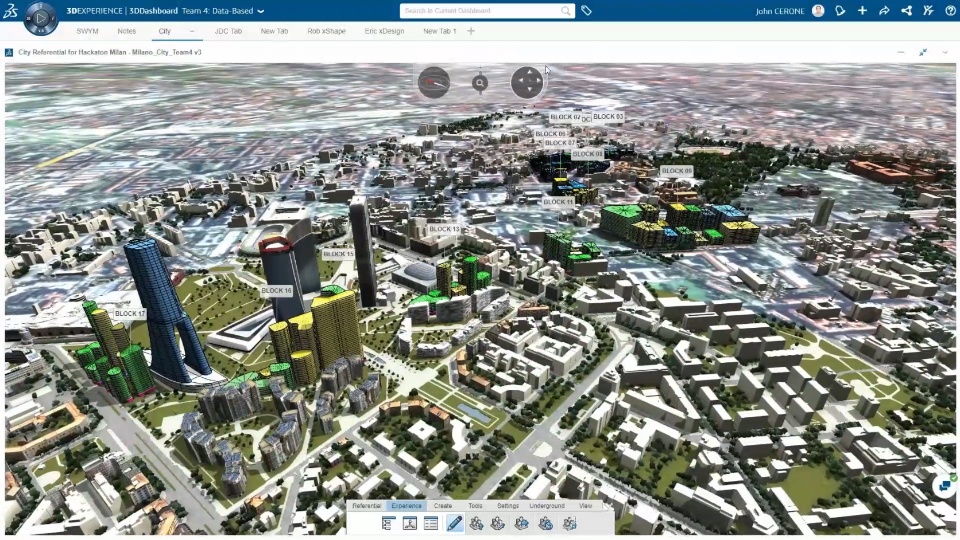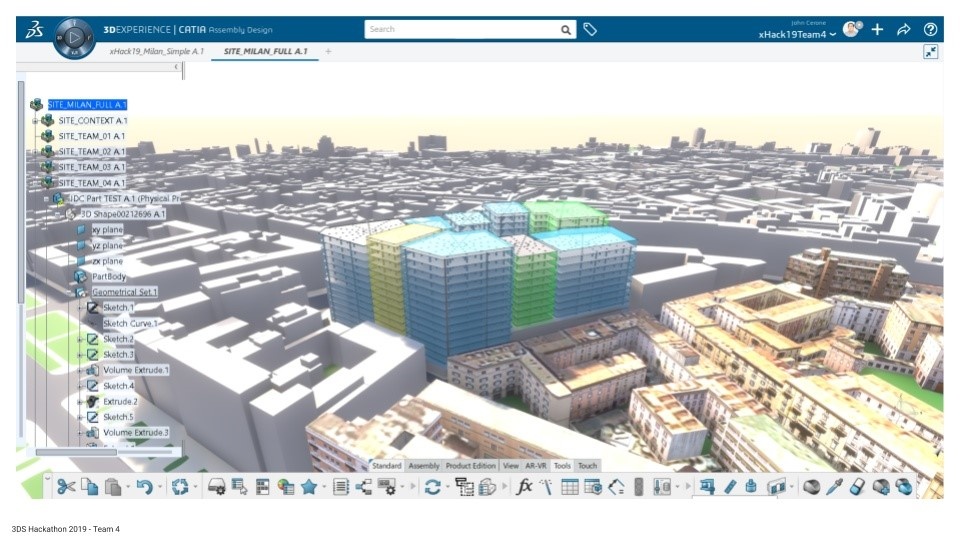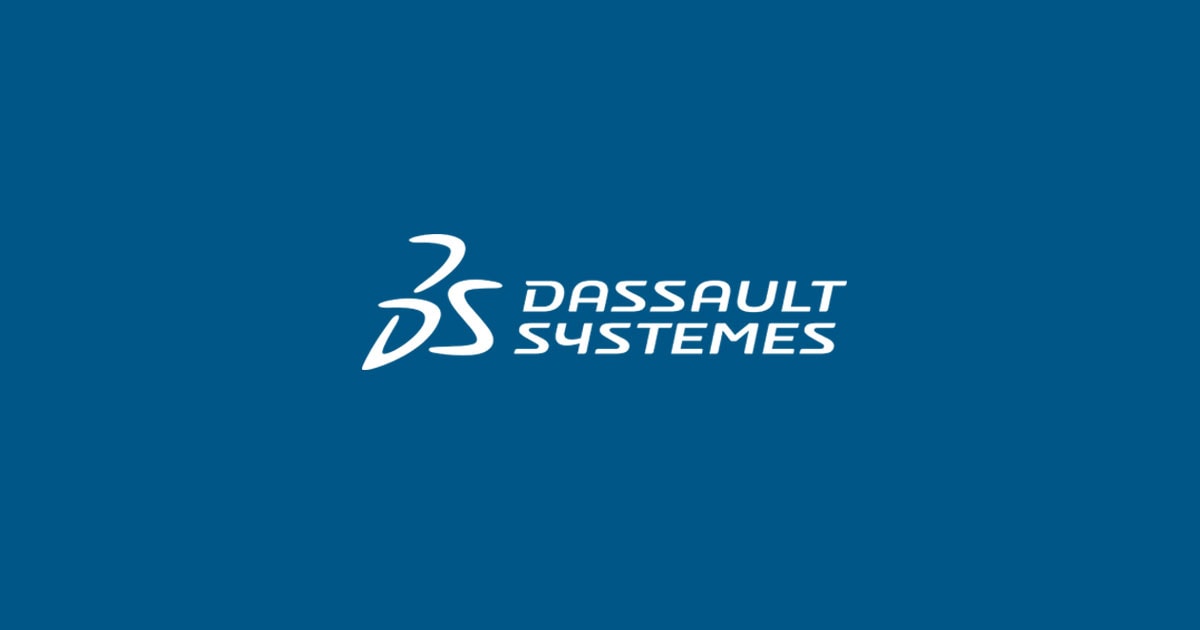In April 2019, 5 teams led by CATIA and SOLIDWORKS experts, and bringing the most progressive architecture and design firms together, had 48 hours to design the Milan of the future. Team 4 was the winners.
EXPERIENCE THE WHOLE STORY IN VIDEO
, Amir Talachian from CADMAKERS, Eric Beatty from OMAX and Robert JOST, SOLIDWORKS Product Definition from Dassault SystèmesTHE CONCEPT
A city can be understood as a complex collection of data – statistical and cultural, historical and contemporary. Each instance of urban change is contingent on the state of that information, and in turn, adds new values to the flow. This means that responsible, effective designers cannot be fulfilled by limiting analysis to isolated sites, or proposed solutions to one-off buildings.
To harmonize all elements of a city into healthy human experience we have to expose ourselves to the full complexity of the urban context. Ethical design demands the ability to respond immediately and intelligently to a city’s global criteria. With their data made visible and harnessed, cities of the future may be minutely responsive to the needs of all their residents. Real-time decision-making then becomes possible for the first time. Optimized through parametric modeling, temporal zoning, and responsive land-use planning, the shape of change can be thoughtfully directed to equitable ends.
Team 4 designed a system able to synthesize diverse sets of data in order to generate actionable infrastructural responses. Data regarding transportation, residential vs. commercial zoning, proximity to supermarkets or other services, even the angle of sunlight can be used to determine the needs of an entire neighborhood. The system then instantiates city blocks based on this data, producing the most efficiently planned design for that area. Starting from the level of a single urban block, this tool effortlessly scales to be instantiated along a corridor of thirteen sites.

 This results in a gradient of integrated and mutually cognizant outputs that shift responsively as you travel through the city. In the historic district, buildings appear low-rise and more angular as to fit in with their surroundings. In the more contemporary area of the city, the buildings will be high-rise and more rounded in appearance. Colors represent the needs of the area, residential space, commercial space, retail and other services.
This results in a gradient of integrated and mutually cognizant outputs that shift responsively as you travel through the city. In the historic district, buildings appear low-rise and more angular as to fit in with their surroundings. In the more contemporary area of the city, the buildings will be high-rise and more rounded in appearance. Colors represent the needs of the area, residential space, commercial space, retail and other services.


 Tweet: Harmonize all elements of a city into healthy human experience – discover the #CATIA hackathon Team 4 project https://ctt.ec/6c7S7+
Tweet: Harmonize all elements of a city into healthy human experience – discover the #CATIA hackathon Team 4 project https://ctt.ec/6c7S7+